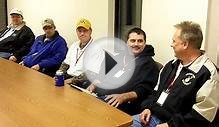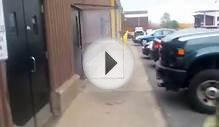
This document describes how to become a "ham" (amateur radio operator). It also answers some common questions about ham radio and about the Texas A&M Amateur Radio Club (W5AC).
1. What is Amateur Radio?
Amateur Radio, also called "ham radio", is a non-commercial radio communication service whose primary aims are public service, technical training/experimentation, and communication between private persons.
Amateur radio operators are commonly called "hams". Hams often communicate with each other recreationally, but also provide communications for others at public events or in times of emergency.
Amateur radio is not the same as AM/FM radio. Besides other differences, amateurs don't "broadcast" to the general public or air music or commercials over their radios. As stated above, amateur radio is a service as well as a hobby.
While AM radio uses a "band" of frequencies around 1 Megahertz (MHz), and FM radio is around 100 MHz, ham radio has many different "bands". They are basically divided between VHF (very high frequency, 50 MHz and higher) and HF ("high" frequency, below 50 MHz) bands.
Morse code knowledge is no longer required for an amateur radio license. Read below for more about the license exam and ham bands.
2. What is W5AC?
W5AC is the Texas A&M University Amateur Radio Club. This organization is composed of students, faculty, staff, and other local residents of Texas A&M and the surrounding community.
W5AC operates a radio shack for members to use while they are on campus. The club is affiliated with the American Radio Relay League (ARRL), the national association for amateur radio.
The club has a weekly radio net, meets monthly, and conducts other activities such as:
- dinners and other friendly get-togethers
- contests to contact lots of distant hams (US and Worldwide)
- public service communication events, i.e. marathons
- digital radio modes, using computers and radios together
- building antennas, projects and other parts ourselves
- good old-fashioned Morse code
- and whatever other events club members want to do!
3. How do I become a ham? How do I get my ham license?
You must earn your amateur radio license before you can transmit "on the air" with a ham radio. This means passing the license exam. To take the exam for any class of amateur radio license, there is a small charge (around $6) to cover copying costs and running the exam sessions.
If you have had a basic Physics or Electronics class, you already know enough "theory" to pass the license exams. Whether you have or not, it won't take very much time to learn the material on your own. The license exam questions are all taken from a "question pool" that is publically available (including the exact questions and all the choices used on the actual exams). Learn enough of these multiple-choice answers, and you will pass the test!
There are also books available to help you learn the material - just make sure the book covers the current (dated) question pool! Local hams will also help you study if you want, occasionally holding study sessions to go through the material.
What to read next? Read about baby carriers http://babycarriersreviews.com/info/2-celebrity-baby-carriers.html
INTERESTING VIDEO












